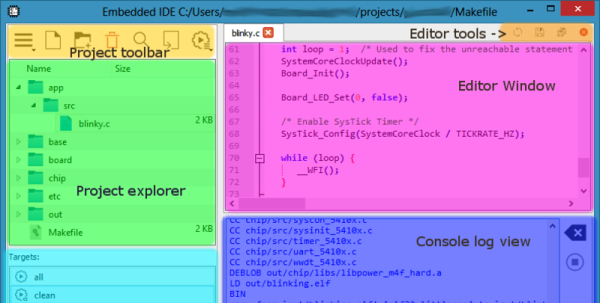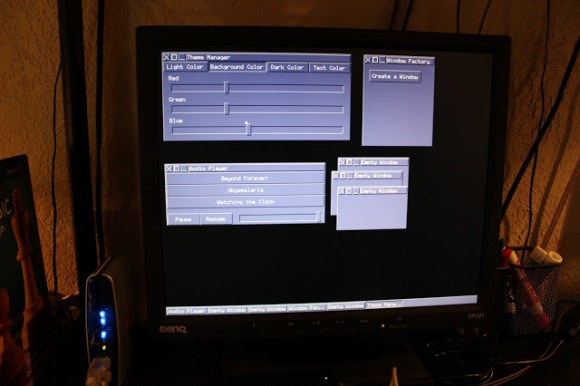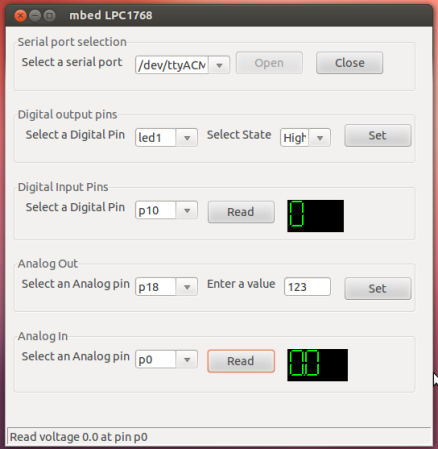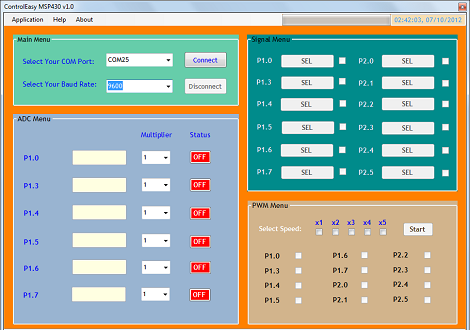We don’t use a GUI IDE, but if we did, it would most certainly be something along the lines of [Martin]’s embedded-IDE project. We’ve always felt that most IDEs are just fancy wrappers around all the tools that we use anyway: Makefiles, diff, git, ctags, and an editor. [Martin]’s project makes them less fancy, more transparent, and more customizable, while retaining the functionality. That’s the hacker’s way — putting together proven standard tools that already work.
The code editor he uses is QScintilla, which uses clang for code completion. The “template” system for new projects? He uses diff and patch to import and export project templates. Because it uses standard tools all along the way, you can install the entire toolchain with sudo apt-get install clang diffutils patch ctags make on an Ubuntu-like system. Whatever compiler you want to use is supported, naturally.
We can’t see a debugger interface, so maybe that’s something for the future? Anyway, if you want a minimalistic IDE, or one that exposes the inner workings of what it’s doing rather than hiding them, then give [Martin]’s IDE a try. If you want more bells and whistles that you’re not going to use anyway, and don’t mind a little bloat and obscuration, many of our writers swear by Eclipse, both for Arduino and for ARM platforms. We’ll stick to our butterflies.






















